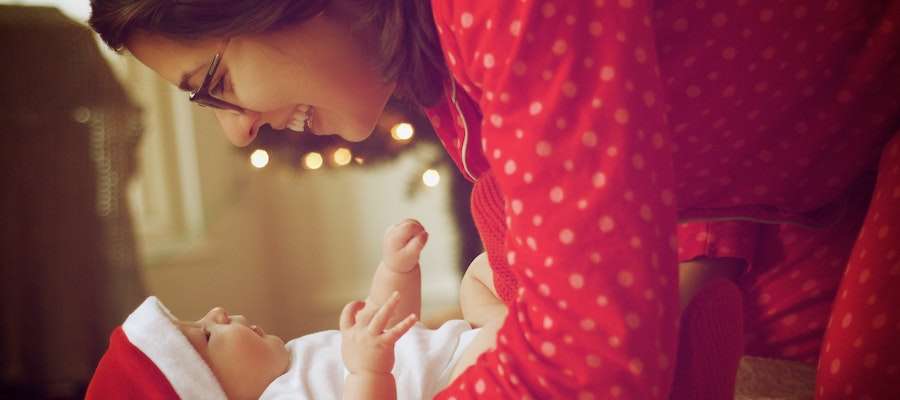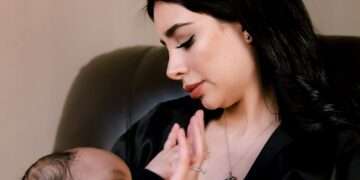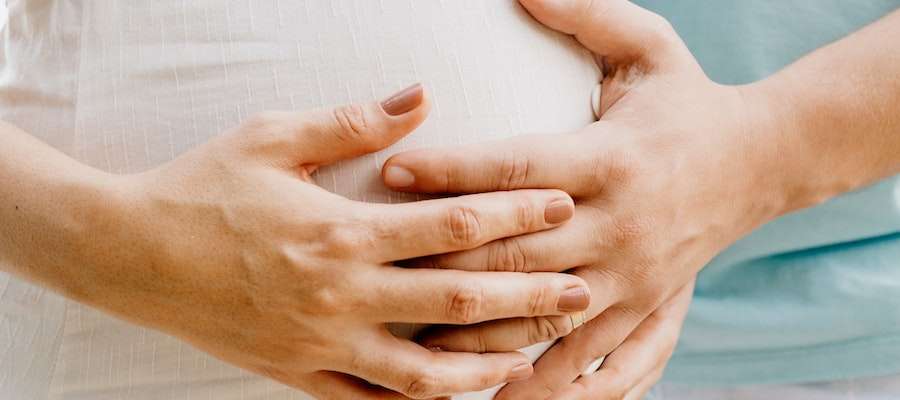Nappy for babies often referred to as nappies, are an essential part of caring for your little one. They come in various types, each offering unique features to meet your baby’s needs.

Different types of Nappy for baby-
There are a lot of nappy options out there. You probably already know that you’ll need to choose between clothes and disposables, but there are also diapers specially designed for particular needs. Here’s an overview of the different types of baby nappy:
- Disposable Diapers:
Disposable diapers are just what the name implies — diapers that you dispose of after one use. These diapers consist of an absorbent pad nestled in between pieces of fabric. The pad itself contains chemical crystals that work to absorb liquid and contain it in gel form. These pads can usually hold up to 800 times their weight in liquid. Your baby can wear disposable diapers longer than cloth diapers when soiled without any discomfort. Some disposable diapers offer overnight protection, which offers even more absorption power and protection.
- Standard Disposable Diapers: These are the most commonly used diapers. They are convenient, and you can simply discard them after use.
- Pull-Up Diapers: These are like underwear and are designed for older babies who are potty training. They can be pulled up and down easily.
- Eco-Friendly Disposable Diapers: These diapers are made from sustainable materials and are more environmentally friendly than traditional disposables.
- Overnight Diapers: Extra-absorbent disposable diapers are designed to keep babies dry during the night.
- Cloth Diapers:
- Prefolding Diapers: These are rectangular cloth pieces that are folded and fastened with pins or snaps. They are cost-effective and can be used with diaper covers.
- Flat Diapers: Flat pieces of cloth that are folded to fit the baby and secured with pins or a Snappi fastener.
- Fitted Diapers: These are contoured diapers with elastic at the legs and waist, offering a snug fit without the need for folding.
- Pocket Diapers: Pocket diapers have a waterproof covering, much like all-in-one diapers. The covering includes a pocket where you can insert a folded diaper or a washable liner. These diapers usually come with snaps or Velcro fasteners to stay closed.
- All-in-One Diapers (AIO): These diapers combine the absorbent layer and waterproof cover into one piece. They are convenient but may take longer to dry.
- Hybrid Diapers: Hybrid systems allow you to use both cloth and disposable inserts in the same diaper cover.
- Diaper Covers: These are waterproof covers that can be used over pre-folding or fitted cloth diapers. They prevent leaks and come in various styles.
- Biodegradable Diapers:
- These diapers are designed to be more eco-friendly than standard disposables. They are made from materials that break down more easily in landfills.
- Swim Diapers:
- These are specifically designed for use in the water. They don’t absorb liquid like regular diapers but provide a snug fit and help contain solid waste.
- Training Pants:
- Training pants are used during potty training. They resemble underwear but have some absorbent capacity, making it easier for toddlers to transition to underwear.
- Reusable Swim Nappies:
- Reusable swim nappies can be used multiple times and are designed to contain solid waste while your baby is in the water.
- Diaper Liners:
- Liners can be placed inside cloth diapers to make clean-up easier. They catch solid waste, which can then be disposed of, leaving the cloth diaper less soiled.
- Cloth Diaper Accessories:
- Various accessories can complement cloth diapering, including diaper pins, Snappi fasteners, and diaper sprayers for rinsing solids.
9. Pre-Folded Diapers
Similar to unfolded diapers, pre-folded diapers are also rectangular in shape. But these diapers are not as big as unfolded diapers and can be easier to use. Pre-folded diapers need to be folded at least once, maybe twice, to fit inside a waterproof diaper cover. Still, these diapers are known for their versatility and ability to meet various absorption needs.
What Are the Different Features of Nappy for Baby?
If you’re a new parent who is shopping for baby nappies for the first time, it’s important that you realize that not all diapers are made equally. Some offer added features like:
- Fasteners: Fasteners will vary depending on the brand of diaper you buy. Some brands still use tape as a way of fastening diapers, but many diaper brands have switched to Velcro fasteners. Velcro fasteners are better than their tape counterparts because they’re less likely to lose their sticking power.
- Contoured fit: Not all diaper brands will have a contoured fit, but most do nowadays. This means that the diapers have an elastic piece around the waist and legs that will help prevent leaks and keep your baby comfortable even as it grows.
- Lotion: A few disposable diaper brands put petroleum-based lotions in the liner of their disposable diapers. Some diapers even have light fragrances to keep your baby smelling fresh.
- Stretchy sides: Similar to elastic waists and legs, stretchy sides will help diapers fit a baby’s body. This keeps your baby comfortable and helps stop leaks.
- Wetness indicator: Wetness indicators are handy features that alert you to when your child needs to be changed. This will keep you from guessing and help keep your child comfortable, as you’ll be able to change them as soon as needed.
Disposable vs. Reusable Nappy for baby: Which Is Better?
Parents have long debated which type of diaper is better: disposable or reusable. There’s no right or wrong answer, and both sides have valid points. It comes down to personal preference.
Disposable nappy offers efficient absorption, but this feature can do both good and harm to your child. While these diapers often keep your baby’s skin free from contact with their messes and are more convenient for parents who would prefer to spend less time changing diapers, they often make it harder to monitor how much your child is urinating. This can make noticing signs of dehydration difficult.
Cloth nappy diapers may be more comfortable than disposable nappy. They may also help prevent diaper rashes. On the downside, cloth diapers tend to be less absorbent and will require more frequent diaper changes.
What to know about Nappy for baby diapers–
There are a lot of Nappy for Baby Diaper options out there. You probably already know that you’ll need to choose between clothes and disposables, but there are also diapers specially designed for particular needs. Here are some you’ll see:
Newborn diapers: Most diaper brands offer a newborn size that fits babies up to 10 pounds. Newborn diapers will generally have a small cutout on the front of the waistband so the diaper doesn’t irritate your baby’s healing umbilical stump.
Diapers for movement: When your baby starts crawling or toddling, the diapers you previously used may gape or slip. Diapers made for babies in these stages may have a narrower crotch than newborn diapers to allow for greater movement and often have elastic at the waist so it flexes with your baby.
Diapers for sensitive skin: Some babies have sensitive skin and may have an allergic reaction to an ingredient in their diapers. Common allergens include fragrance, dyes, preservatives, or elastic, says the AAP.
Overnight diapers: These diapers typically have maximum absorbency, as babies may stay in them for longer periods of time. Many brands advertise their goal of keeping babies dry for up to 12 hours.
Swim diapers: Swim diapers contain solids to keep pools free from pathogens. They don’t absorb liquids, though: If your child pees in the water, the swim diaper lets it pass through.
Training diapers: Once you start potty training, you may want to switch to training diapers. These are designed to mimic underwear, and a child can step into them and pull them up rather than having to fasten them on.
Some Nappy for baby diapers also have features that increase absorbency and make diapers easier to use, such as wetness indicators that change color when exposed to liquid, tabs that secure in more than one place, or special padding in certain areas.
When do I change nappy sizes?
You change your child’s diaper size when they’ve outgrown the weight limit on your preferred brand. Of course, weight is not the only indicator. You should also want to look for signs of outgrowing their diapers: tabs that are hard to close, and elastic that leaves marks on your baby’s skin.
Many parents like to register for diapers in different sizes and have a supply ready to go. But you may not want to stock up too much, since it’s hard to predict your baby’s exact growth trajectory.
Do I need a newborn nappy?
It depends on your baby’s size. Newborn-sized nappies only fit babies up to about 10 pounds. Depending on your child’s birth weight and how quickly he or she gains weight, you may not need many, or even any, newborn-size diapers before your baby graduates to size 1.
Choosing the best nappies for baby–
Baby nappies, also known as diapers, are a fundamental part of caring for infants and toddlers. They offer a range of benefits for both parents and babies, making them an indispensable item in child-rearing. Here are some of the key advantages of using baby nappies:
1. Convenience
One of the most significant benefits of baby nappies is their convenience. They provide a quick and hygienic way to manage a baby’s waste. Parents can change nappies easily, making it practical for use both at home and on the go.
2. Hygiene and Cleanliness
Nappies help maintain a clean and hygienic environment for babies. They contain waste, preventing it from coming into contact with the baby’s skin, which reduces the risk of skin irritation, rashes, and infections.
3. Reduced Laundry Burden
Using nappies significantly reduces the amount of laundry parents need to do. Cloth diapers, for instance, can be reused after washing, minimizing the frequency of laundry and saving time and energy.
4. Comfort for Babies
Modern nappies are designed to be comfortable for babies. They are made from soft and breathable materials that keep babies dry and minimize discomfort. This contributes to better sleep and overall well-being for infants.
5. Easy to Use
Disposable nappies are incredibly easy to use. They come with adhesive tabs or hook-and-loop closures, making it simple for parents to secure them in place. This ease of use is especially beneficial during nighttime changes.
6. Wetness Indicators
Many disposable Nappy for babies come with wetness indicators that change color when the nappy is wet. This feature helps parents know when it’s time for a diaper change, reducing the chances of prolonged exposure to wetness.
7. Versatility
Nappies are versatile and come in various sizes to accommodate babies of different ages and weights. Whether you have a newborn or a toddler, you can find nappies that fit their specific needs.
8. Prevent Leaks
Modern Nappy for babies is designed to be highly absorbent, which helps prevent leaks. They can hold a significant amount of liquid, keeping babies dry and comfortable for extended periods.
9. Economical Options
While there is an initial cost associated with buying nappies, some options, like cloth diapers, can be cost-effective in the long run. Reusable nappies can save money over the course of a baby’s diaper-wearing years.
10. Environmental Considerations
Some parents opt for eco-friendly nappies, such as cloth or biodegradable disposable nappies, to minimize their environmental impact. These options are designed to be more sustainable.
11. Reduction in Diaper Rash
Properly maintained and changed Nappy for baby can reduce the occurrence of diaper rash. Keeping the baby’s skin dry and clean is an essential step in preventing this common issue.
12. Support for Potty Training
As babies grow, Nappy for baby can also aid in the potty training process. Many parents transition from nappies to pull-up training pants, which are designed to be more like underwear.
Is diaper safe for baby boy?
Diapers are considered safe for babies, even babies less than a day old. In fact, some diapers are made specifically for babies. Wearing diapers all day is not recommended. Wearing diapers 24/7, including at night increases the risk of skin irritation, rash, and skin rash.
In summary, Nappy for Baby offers numerous advantages for parents and babies alike. They provide a convenient and hygienic solution for managing waste, offer comfort for babies, and come in various options to suit different needs and preferences. Whether you choose disposable or cloth nappies, their benefits are invaluable in the early stages of parenting.
The type of baby nappy diaper you choose depends on your personal preferences, lifestyle, and environmental considerations. Many parents use a combination of these types to meet their baby’s needs at different times. The choice of nappy type often depends on personal preference, convenience, budget, and environmental concerns. Experiment with a few types to see which works best for your family and your little one’s comfort.

































